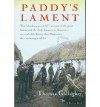Currently reading
Paddy's Lament, Ireland 1846-1847: Prelude to Hatred
Pivot: The Only Move That Matters Is Your Next One
When in French: Love in a Second Language
Beyond the Job Description: How Managers and Employees Can Navigate the True Demands of the Job
Vision and Art: The Biology of Seeing
Achieving Your Potential As A Photographer: A Creative Companion and Workbook
Reclaiming Conversation: The Power of Talk in a Digital Age
Picture Perfect Practice: A Self-Training Guide to Mastering the Challenges of Taking World-Class Photographs (Voices That Matter)
Man's Search for Meaning
Terms of Service: Social Media and the Price of Constant Connection
Snoop: What Your Stuff Says About You
 Part pop-culture, part quasi academic literature. The writing and tone in this book is uneven. At times it really held my interest, and then it would get bogged down. The basic premise is that we can tell a lot about people by their possessions, but that it takes some careful analysis and you have to distinguish between false leads, and images that people are trying to project and who they really are. "Getting to know someone means progressing through three levels of intimacy. 1. Traits, the first level: openness, conscientiousness, extraversion, agreeableness, and neuroticism. 2) Personal concerns, contextual details include roles, goals, skills, values. 3) identity level. An inner story that integrates the reconstructed past, perceived present, and anticipated future to provide a life with unity, purpose and meaning. Two ways to make faulty judgments: 1) failing to use valid clues 2) wrongly using invalid clues. People can falsely rely on interviews. Instead of looking at the amount of gesturing to judge motivation, the interviewers should have paid attention to how far forward the applicants leaned. The more they leaned, the more motivated they were. "This general snooping strategy -- contrasting the easy-to-control items (which tend to be identity claims and feeling regulators) with things that are difficult to control (which tend to be behavioral residue) -- captures many of the specific examples we have examined so far, such as comparing front and back yards, or offices and bedrooms, or books on the coffee table versus books in the bedroom. What makes this 2-dimensional system useful is that it reminds you of the important questions to ask yourself when making your comparisons. Is this object in a public or a private context? And how much control does the snoopee have over it? Whereas a novice snooper might just take note of the snoopee's music collection, a super snooper would need to distinguish between music that is public (a collection of vinyl sitting out in the living room) and music that is private (a playlist on a computer at work). A beginner would note the snoopee's photos or paintings, but an advanced snooper would want to determine the difference between art the snoopee had control over (taped to the refrigerator door) and art that was out of his hands (pictures on office wall identical to those in the offices nearby)
Part pop-culture, part quasi academic literature. The writing and tone in this book is uneven. At times it really held my interest, and then it would get bogged down. The basic premise is that we can tell a lot about people by their possessions, but that it takes some careful analysis and you have to distinguish between false leads, and images that people are trying to project and who they really are. "Getting to know someone means progressing through three levels of intimacy. 1. Traits, the first level: openness, conscientiousness, extraversion, agreeableness, and neuroticism. 2) Personal concerns, contextual details include roles, goals, skills, values. 3) identity level. An inner story that integrates the reconstructed past, perceived present, and anticipated future to provide a life with unity, purpose and meaning. Two ways to make faulty judgments: 1) failing to use valid clues 2) wrongly using invalid clues. People can falsely rely on interviews. Instead of looking at the amount of gesturing to judge motivation, the interviewers should have paid attention to how far forward the applicants leaned. The more they leaned, the more motivated they were. "This general snooping strategy -- contrasting the easy-to-control items (which tend to be identity claims and feeling regulators) with things that are difficult to control (which tend to be behavioral residue) -- captures many of the specific examples we have examined so far, such as comparing front and back yards, or offices and bedrooms, or books on the coffee table versus books in the bedroom. What makes this 2-dimensional system useful is that it reminds you of the important questions to ask yourself when making your comparisons. Is this object in a public or a private context? And how much control does the snoopee have over it? Whereas a novice snooper might just take note of the snoopee's music collection, a super snooper would need to distinguish between music that is public (a collection of vinyl sitting out in the living room) and music that is private (a playlist on a computer at work). A beginner would note the snoopee's photos or paintings, but an advanced snooper would want to determine the difference between art the snoopee had control over (taped to the refrigerator door) and art that was out of his hands (pictures on office wall identical to those in the offices nearby)













